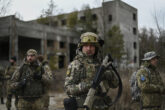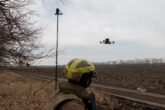May 10, 2023
Marine Force Design: Changes Overdue Despite Critics’ Claims
In the military, as in most public organizations, new leaders need to take stock. They are obligated to determine the state of the institution and its preparedness to execute its current missions, particularly during times of rapid technological change. Leaders must also assess whether the organization is ready to account for evident or anticipated changes in the foreseeable future. If they judge that the institution is not prepared for current or future challenges, then it is incumbent upon them to make the changes deemed necessary to make it so.
Imagine a Corps that can emulate what the Ukrainian army did to the Russian army during the first phase of Russian President Vladimir Putin’s “special military operation,” but amplified by an order of magnitude or more.
As he assumed the role of 38th commandant of the Marine Corps, Gen. David Berger, the sitting commandant of the U.S. Marine Corps, conducted just such an assessment. Upon completion, he concluded, “Significant change is required to ensure we are aligned with the 2018 National Defense Strategy and [Defense Planning Guidance] and prepared to meet the demands of the Naval Fleet in executing current and emerging operational naval concepts.” This was a difficult judgment to make for a decorated leader of a service as fiercely proud of its martial prowess as the Marine Corps. I understand this intimately, having served as a Marine artillery officer for 27 years. But Berger was convinced by the evidence that change was required, and he was intent on doing something about it. The “doing something about it” came in the form of Force Design 2030, which is both a case for change and a vision and a plan for a modernized Marine Corps that is ready to take on future challenges.
Read the full article from the Texas National Security Review.
More from CNAS
-
Defense / Transatlantic Security
When Defense Becomes Destruction: Austria-Hungary’s Mistake and Ukraine’s RiskThis article was originally posted on War on the Rocks. The southeastern Polish city of Przemyśl, with its elegant 19th century Habsburg-era train station, remains one of the ...
By Franz-Stefan Gady
-
Defense / Transatlantic Security
Ukraine’s Catch-22 MomentThis article was originally published in the Financial Times. In Joseph Heller’s wartime classic, Catch-22, the protagonist Yossarian seeks out the US army surgeon Doc Daneeka...
By Franz-Stefan Gady
-
CNAS Insights | Budgetary Own Goals Undermine “Speed and Volume”
On November 7, Secretary of Defense Pete Hegseth laid out a plan to overhaul the Department of Defense’s (DOD’s) acquisition system. Placing an emphasis on delivering new capa...
By Philip Sheers, Carlton Haelig & Stacie Pettyjohn
-
Drones: Who Is Making the New Weapons of War?
From Ukraine and Russia to Gaza and Sudan, drones have become a key weapon of war. Which companies are making them, and profiting from this rapidly expanding but controversial...
By Stacie Pettyjohn




